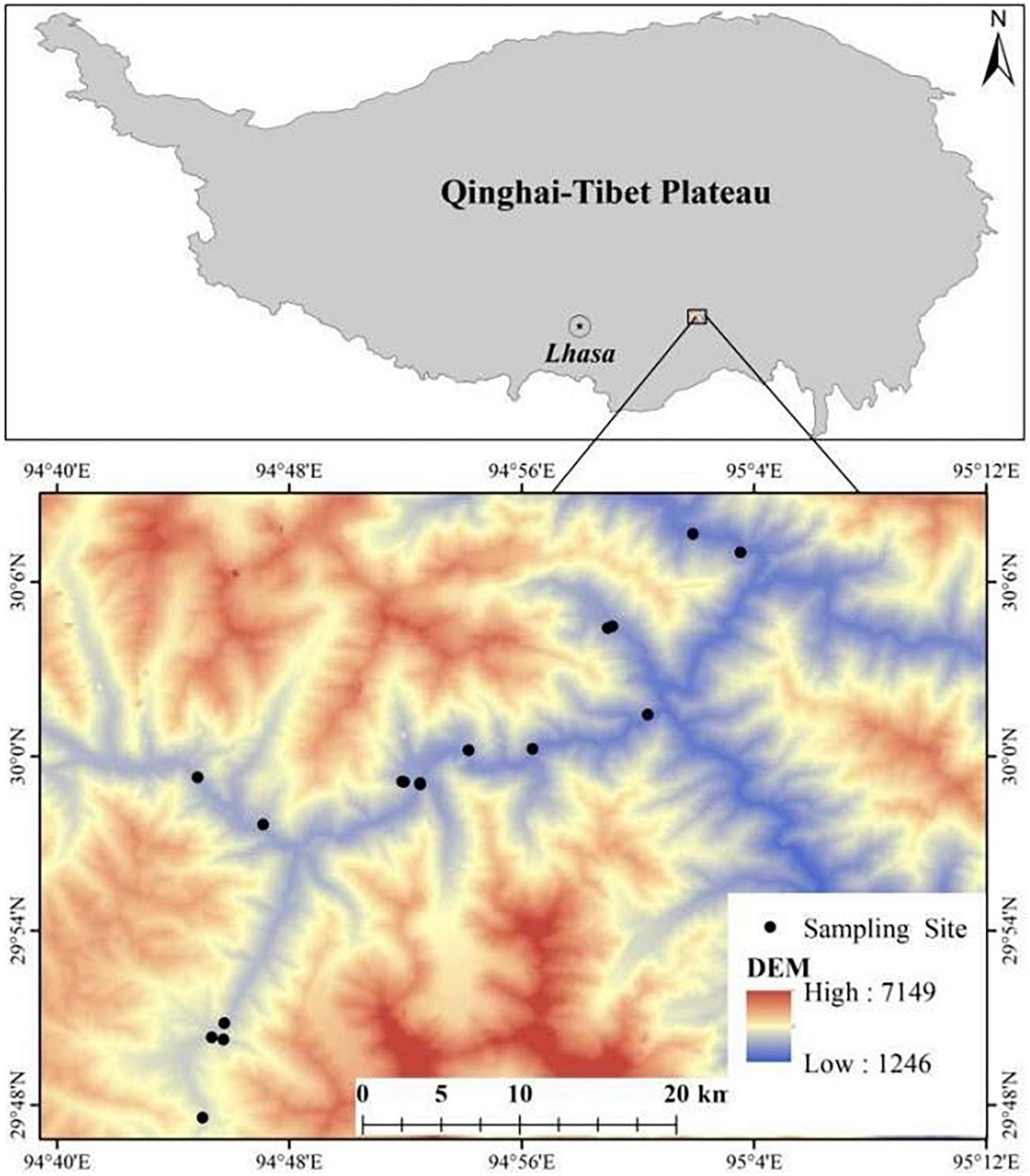Report on Ecosystem Health Assessment in the Xiaoluan River Watershed and its Implications for Sustainable Development Goals
1.0 Introduction and Alignment with Sustainable Development Goals (SDGs)
This report summarizes a research initiative assessing the ecosystem health of the Xiaoluan River watershed in northern China from 2006 to 2020. The study’s focus on revegetation effectiveness, ecosystem resilience, and environmental stressors directly informs several United Nations Sustainable Development Goals (SDGs). The primary objective is to evaluate the health of a critical mountainous ecosystem, a key component of SDG 15 (Life on Land), which aims to protect, restore, and promote the sustainable use of terrestrial ecosystems. Furthermore, by analyzing the impacts of thermal and water stress, the research provides critical data for SDG 13 (Climate Action), highlighting the need for climate-resilient ecosystem management. The findings also bear relevance to SDG 6 (Clean Water and Sanitation), as the health of a watershed ecosystem is intrinsically linked to water resource security.
2.0 Methodology
Ecosystem health was assessed using the Vigor-Organization-Resilience (VOR) framework. To quantify the influence of environmental factors, the study integrated multiple statistical techniques:
- Ordinary Least Squares (OLS)
- Geographically Weighted Regression (GWR)
- Multiscale Geographically Weighted Regression (MGWR)
3.0 Key Findings and Relevance to SDG Targets
3.1 Ecosystem Health Status (2006-2020)
The overall ecosystem health of the watershed showed a slight, though not statistically significant (p>0.05), improvement over the study period. This finding indicates that while revegetation efforts may be contributing positively, they have not yet resulted in a robust and statistically verifiable enhancement of the ecosystem, posing a challenge to achieving SDG Target 15.3 (combat desertification, restore degraded land and soil).
- The Ecosystem Health Index (EHI) varied from 0.49 to 0.57.
- Ecosystem Resilience (ER) was found to be consistently low, with a mean value of only 0.19 across the years.
3.2 System Vulnerability and Risks to SDG 15
The low ecosystem resilience is a significant concern for SDG 15. It suggests that the revegetated areas are vulnerable to environmental shocks and may not be sustainable in the long term. Further analysis revealed strong spatial clustering and positive autocorrelations, particularly for Needleleaf evergreen and Broadleaf deciduous tree types. This indicates a high susceptibility to abrupt transitions or potential ecosystem collapse following environmental perturbations, directly threatening the goals of halting biodiversity loss and ensuring ecosystem stability.
3.3 Environmental Controls and Link to SDG 13 (Climate Action)
The study identified climate-related stressors as the primary constraints on ecosystem health, underscoring the direct impact of climate change on terrestrial ecosystems as outlined in SDG 13.
- Thermal Stress (Temperature): This was identified as a dominant constraint, particularly at the beginning of the growing season.
- Water Stress (Precipitation): This becomes the primary limiting factor during the peak growing season.
This seasonal shift in dominant stressors highlights the complex challenges climate change poses to ecosystem management and the need for adaptive strategies to build resilience, a core tenet of SDG 13.
4.0 Conclusions and Policy Recommendations for Achieving the SDGs
The research concludes that despite ongoing revegetation efforts, the mountainous watershed ecosystem remains in a fragile state with low resilience, primarily due to climatic constraints. To advance progress on the Sustainable Development Goals, particularly SDG 15 and SDG 13, the following recommendations are put forth:
- Enhance Climate Resilience in Restoration Projects: Revegetation policies must explicitly incorporate climate adaptation strategies. This includes selecting species that are resilient to both thermal and water stress and avoiding monocultures of vulnerable tree types like those identified in the study.
- Adopt Cautious Planting Strategies: Greater caution must be exercised when implementing large-scale afforestation with planted forests. The risk of ecosystem collapse under environmental stress necessitates a focus on building diverse, resilient, and self-sustaining ecosystems rather than merely increasing forest cover.
- Strengthen Monitoring for Adaptive Management: Continuous monitoring of ecosystem health, particularly resilience indicators, is crucial for the adaptive management of restored areas. This will help in early detection of vulnerabilities and allow for timely interventions to prevent ecosystem degradation, thereby supporting the long-term objectives of SDG 15 and ensuring the sustainability of investments in nature-based solutions.
SDGs Addressed in the Article
- SDG 15: Life on Land – The article’s core focus is on assessing the ecosystem health of a terrestrial ecosystem (a mountainous watershed), the impacts of revegetation (reforestation), and the resilience of forests, which directly aligns with protecting and restoring life on land.
- SDG 13: Climate Action – The study explicitly links ecosystem health to “intensified climate change” and identifies “thermal stress and water stress” as primary constraints, directly addressing the need to understand and build resilience to climate-related hazards.
- SDG 6: Clean Water and Sanitation – The research is set in the “Xiaoluan River watershed.” The health and restoration of watershed ecosystems are fundamental to protecting water resources, connecting the article’s themes to the protection of water-related ecosystems.
Identified SDG Targets
-
SDG 15: Life on Land
- Target 15.1: Ensure the conservation, restoration and sustainable use of terrestrial and inland freshwater ecosystems. The article directly addresses this by assessing the ecosystem health of a mountainous watershed undergoing revegetation, which is a form of restoration. It evaluates the success and risks of these efforts to ensure the ecosystem’s long-term health.
- Target 15.2: Promote the implementation of sustainable management of all types of forests, halt deforestation, restore degraded forests and substantially increase afforestation and reforestation. The article’s focus on “revegetation” and “planted forest” in a mountainous area is a direct examination of reforestation efforts and provides insights for sustainable management by warning against potential ecosystem collapse.
- Target 15.3: Combat desertification, restore degraded land and soil. The study is conducted in a “fragiled” ecosystem, and revegetation is a key method for restoring degraded land. The assessment of ecosystem health helps to measure progress towards this target.
-
SDG 13: Climate Action
- Target 13.1: Strengthen resilience and adaptive capacity to climate-related hazards. The article quantifies the ecosystem’s low resilience (ER) and its “proneness to abrupt transition in case of an environmental perturbation” driven by climate change (thermal and water stress). The research aims to inform policies that can enhance this resilience.
-
SDG 6: Clean Water and Sanitation
- Target 6.6: Protect and restore water-related ecosystems, including mountains, forests… The entire study is centered on the “Xiaoluan River watershed,” a mountainous, forested, water-related ecosystem. The assessment of its health following revegetation is a direct contribution to monitoring the status of such ecosystems.
Indicators for Measuring Progress
-
Implied Indicators for SDG 15
- Ecosystem Health Index (EHI): The article explicitly measures this, stating it “varied from 0.49 to 0.57” from 2006-2020. This serves as a direct indicator of the condition of the terrestrial ecosystem (Target 15.1, 15.3).
- Extent of forest cover/revegetation progress: The study is based on the “proceeding of revegetation,” implying that the area of planted forest is a key metric for tracking progress on restoration efforts (Target 15.2).
- Ecosystem Resilience (ER): The article quantifies this metric, noting the mean value was “only 0.19,” indicating the ecosystem’s vulnerability and the status of its restoration (Target 15.1, 15.3).
-
Implied Indicators for SDG 13
- Ecosystem Resilience (ER) to climate shocks: As mentioned above, the low ER value of 0.19 is a direct measure of the ecosystem’s lack of resilience and adaptive capacity to climate-related perturbations like drought or heatwaves (Target 13.1).
- Measurement of climate stressors: The article identifies “thermal stress” (T) and “water stress” (P) as the primary environmental controls, implying that temperature and precipitation data are used as indicators of climate-related hazards affecting the ecosystem (Target 13.1).
-
Implied Indicators for SDG 6
- Health of a water-related ecosystem: The Ecosystem Health Index (EHI) of the Xiaoluan River watershed serves as a comprehensive indicator for the condition of this water-related ecosystem, directly measuring progress towards its protection and restoration (Target 6.6).
Summary Table of SDGs, Targets, and Indicators
| SDGs | Targets | Indicators Identified or Implied in the Article |
|---|---|---|
| SDG 15: Life on Land | 15.1: Ensure conservation and restoration of terrestrial and inland freshwater ecosystems. | Ecosystem Health Index (EHI) of the watershed; Ecosystem Resilience (ER) score. |
| SDG 15: Life on Land | 15.2: Promote sustainable forest management and restore degraded forests. | Progress of revegetation efforts; Analysis of planted forest health. |
| SDG 15: Life on Land | 15.3: Combat desertification and restore degraded land. | Ecosystem Health Index (EHI) in a “fragiled” ecosystem. |
| SDG 13: Climate Action | 13.1: Strengthen resilience and adaptive capacity to climate-related hazards. | Ecosystem Resilience (ER) score; Identification of thermal and water stress as primary constraints. |
| SDG 6: Clean Water and Sanitation | 6.6: Protect and restore water-related ecosystems. | Ecosystem Health Index (EHI) of the Xiaoluan River watershed. |
Source: frontiersin.org







